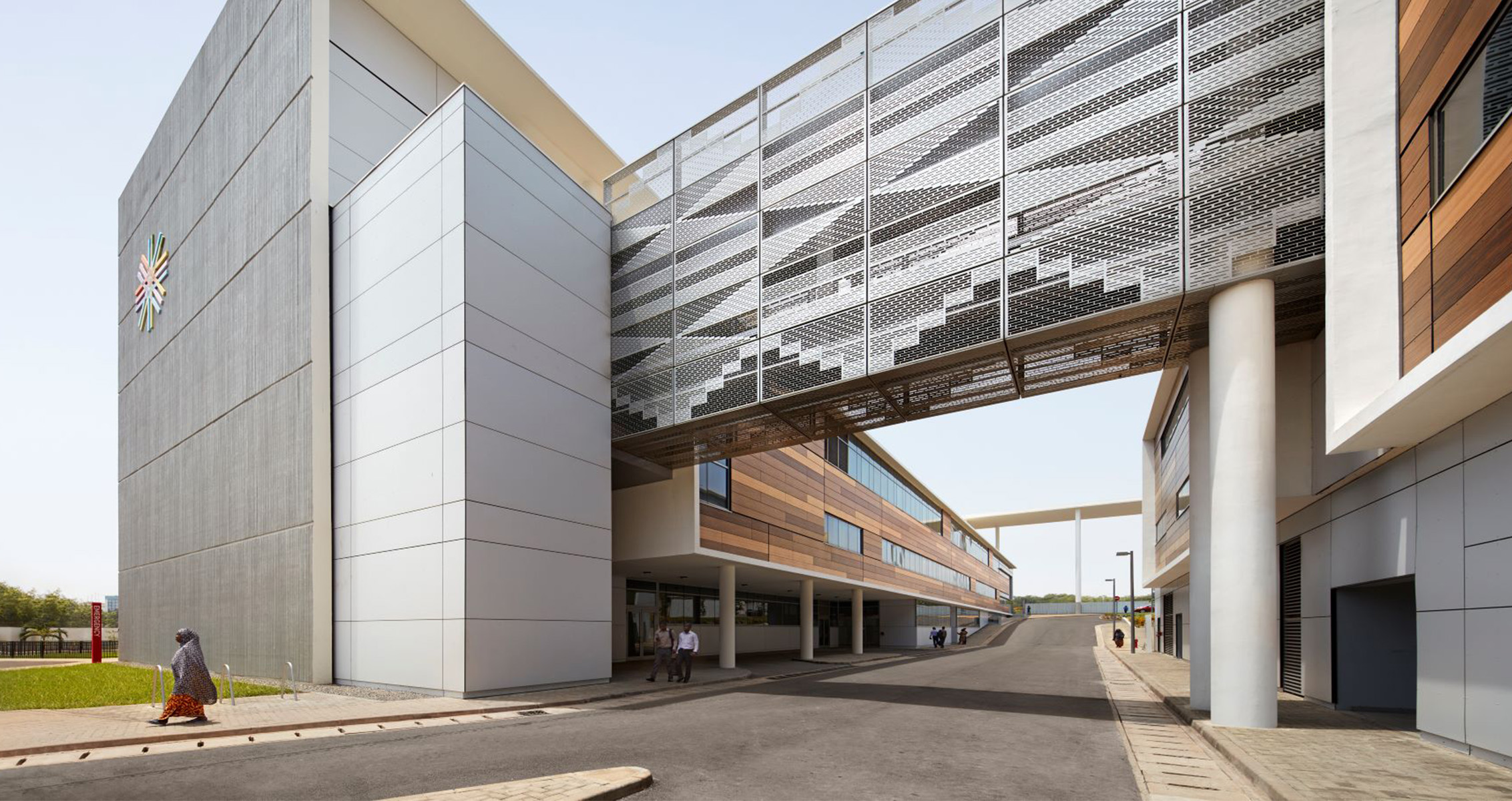This week, we unveiled an opportunity that will give recent design school graduates the power to help define the future of healthcare. The E. Todd Wheeler Health Fellowship, named after the renowned design visionary and former Perkins&Will principal, challenges the next generation of hospital architects, interior designers, and planners to innovate.
Wheeler devoted his career to seeking answers to three critical questions: Is the effect of the physical environment on human beings adverse or favorable? Can a hospital building possess the quality of living things? What does the future hold? In the same spirit of curiosity that fuels our firm, we thought it would be interesting to ask a few health-focused designers to reflect on these questions, too.
Is the effect of the physical environment on human beings adverse or favorable? Can it be measured?
Monica says: If we take the physical environment to include both built and natural (a distinction quickly losing meaning in the current times), I do believe the environment until recently has had a supportive effect on human beings. It’s a difficult question to answer because it has historically enabled the human species to thrive. However, as the recent U.S. climate change report released by the Global Change Research Program indicates, both the built and some “natural” environments are taking on an adverse effect. Lifespans are reducing due to air quality, and extreme weather events are causing more casualties. I do believe those impacts can and are being measured, and humans have the capacity to reverse this trend. The only question is – are we willing?
Damien says: I believe it can be both, and it depends on several factors. For instance, in regard to healthcare, wayfinding is a huge factor for human beings. If the way to the main entrance or emergency entrance isn’t clear, it can increase stress levels in human beings. A favorable example of the effect of the physical environment would be the benefits of natural daylight in our working environments. And yes, I believe it can all be measured. With today’s wearable technology we can monitor heart rates and blood pressure when people are in stressful situations.
Travis says: Depending on the design and function of the built environment, the effect can be adverse or favorable. What is designed and built has the power to disrupt or strengthen the growth of a community. For example, Robert Moses designed and built the I-10 highway through a striving African-American community that ultimately divided and forced it into urban decay. Another example is the harsh living conditions in the Bronx, New York City that gave birth to an entire genre of music called Hip Hop.
It can be measured for sure. The impact of our designs need to be analyzed over a period of time. A few questions that I feel should be asked during the design process of the built environment are:
Does it foster community engagement and activity with open spaces?
Does it provide safety and security?
Is it sustainable?
Does it maintain the character and culture of the community it serves?
Does it stimulate economic growth?
Julie says: As architects, it is our duty to be stewards of the environment that is shaped by the buildings, sites, and urban plans we create. We have a great impact on the public realm, scripting human interaction via landscaped sites and sustainable buildings. In recent years, I believe we have become increasingly aware of our influence through intentional design. The impact of architecture can absolutely be measured. Metrics are key because without a baseline or targets, there is no way to know if we are improving. Each facet of sustainable design can be measured. For example, through metrics and evidence-based design, we have identified that increasing visibility of nature leads to more productivity for staff and shorter patient stays.
Can a hospital building possess the quality of living things, such as flexibility, adaptability, mobility, resilience, the ability to grow, to regenerate itself?
Damien says: I believe hospitals can possess those qualities. With the proper planning from a physical environment perspective and the proper vision from stake holders, achieving all of the characteristics mentioned above is doable. It would be limited to availability of space, but I think a hospital could realize it.
Julie says: Absolutely. Hospitals must be resilient and capable of continuous operation to provide life-sustaining measures despite the impact of shocks and stressors. In these instances, spatial flexibility must accommodate an influx of patients and staff. For example, dual purpose usage strategies might include a physician lounge becoming a command center, a community space becoming an area for mass triage, or an ambulance canopy becoming a decontamination zone.
What does the future hold?
Damien says: This is hard to determine, but I think there are opportunities due to the continued advancement of medicine and technology. The healthcare environment may continue to change and definitely become more community focused as people become more aware and take direct control of their health. As people continue to change diets and increase their activities as needed, a doctor visit may be only via cell phone or email. Vitals and body metrics might be able to be accessed in a patient portal that is tied to a wearable device. There is always going to be a need for emergency and surgical environments, but we may see more community facing wellness clinic centers become the model.
Julie says: Opportunities are abundant as hospitals engage communities in wellness education and outreach, and as technology continues to advance. The future of healthcare will be more regenerative not only in design, but in the community it serves. Apps for mobile doctor visits both reduce the carbon footprint by eliminating the need to commute and by being readily available to the public before an illness escalates or even exists. Strategies such as outreach to provide knowledge on healthy living, renewable energy, and editable landscapes will also be incorporated into healthcare design as the baseline rather than the target.

